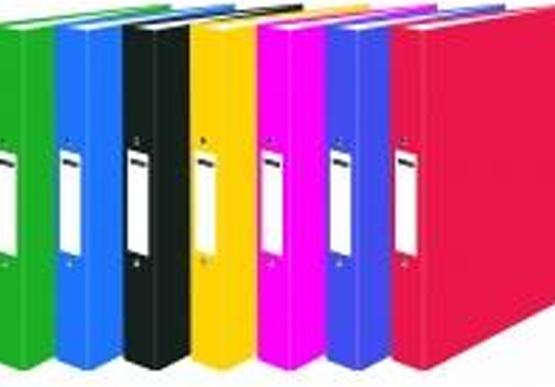Are your office files getting out of hand? Here are four helpful tips for a more efficient, less stressful filing system.
Throw out everything you don’t need
With office papers, the impulse is often to keep hold of everything (either in a stack of papers on your desk, or dumped in a filing cabinet along with all your valuable documents) just in case it comes in handy someday.
But following this impulse just allows ‘junk’ files to accumulate – so locating the files you’ll actually need becomes all the more difficult, stressful and time-consuming.
Instead of hoarding unnecessary documents, get into the habit of throwing them out and shredding anything which might contain client names, addresses and other sensitive data. If you’re anxious about throwing out important files by accident, invest in a scanner and make digital copies before you chuck them (but make sure any sensitive files are stored in a secure location, such as an off-grid computer or hard drive).
You should also avoid impulsively printing out email documents. Ask yourself; do you really need a paper copy of this? It’s smart to save digital backups, but don’t print out a paper backup unless it’s essential – you’ll just give yourself more shredding work to do later…
Divide your files between ‘primary’ and ‘secondary’ systems
Having all your documents in one place makes sense, right? The trouble comes when you’re working on an ongoing project and need to keep referring back to the same documents.
If you store them in a single filing system, you’ll need to waste time digging through all your other files to find the ones you need – then you’ll re-bury them in the same system and the cycle will repeat. If you keep them on your desk, you’re more likely to lose them amidst a sea of paperwork.
Rather than bundling everything into one storage system, set up two different systems – one for documents which relate to urgent and ongoing projects, and another for long-term storage of completed projects.
Keep your ‘primary’ system in the main area of your office, within easy reach of your staff. This not only makes it quicker to find documents which are relevant to your current workload, but also gives you somewhere secure to store them once you’re done with them. Meanwhile, your ‘secondary’ system can be placed in a storage room, cupboard or somewhere tucked away from your main working area.
Review the files in your primary system regularly (at least once a month) so that any documents relating to completed projects can be moved to your secondary system.
Make sure your system works for everyone
Of course, everyone in your office will be will have a slightly different way of managing their own files – and the discrepancies between methods can quickly create chaos for your filing cabinet.
The solution here is not to enforce your preferred file system on your team; but to sit down with them, find out which filing methods and storage systems work for them, and agree on a shared system together.
Remember, your filing system should not only make it quick and intuitive to track down the papers you need; it should make filing them away in the right place straightforward too. You might need to try out a few different solutions in practice before you’ll hit on one that works for everyone.
Once you’ve agreed on a system, make sure you all stick to it – after all, there’s no point in having a system if individual employees stubbornly insist on using their own methods. Don’t forget to train any new hires on how your team manages your filing, and review your files and procedures each year to check if the system is still serving the needs of the business.
Make it fun
Let’s face it; filing is tedious. Breaking up the monotony will make the process faster and more enjoyable for everyone.
One way to do this is to introduce a bit of colour into your filing system. Use colour coding to separate different client projects, assign colours to different types of documents, or give each department of your workforce an individual colour so they can quickly identify which documents are their responsibility.
Of course, document corners work great for colour coding; but you can also use folders, tabs, stickers – whatever works best for you and your team.
–
Keep following the DocumentCorners.co.uk blog for more office organisation tips and tricks – or to find out more about our custom-printed document corners, call our friendly team on 02380 878 030
